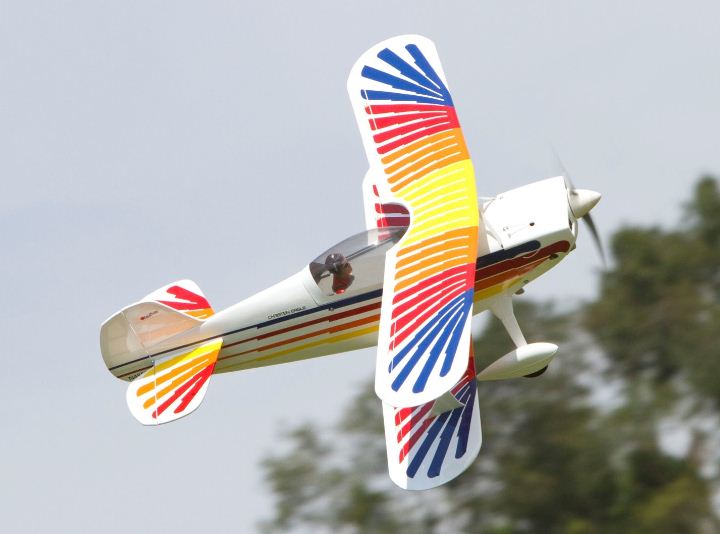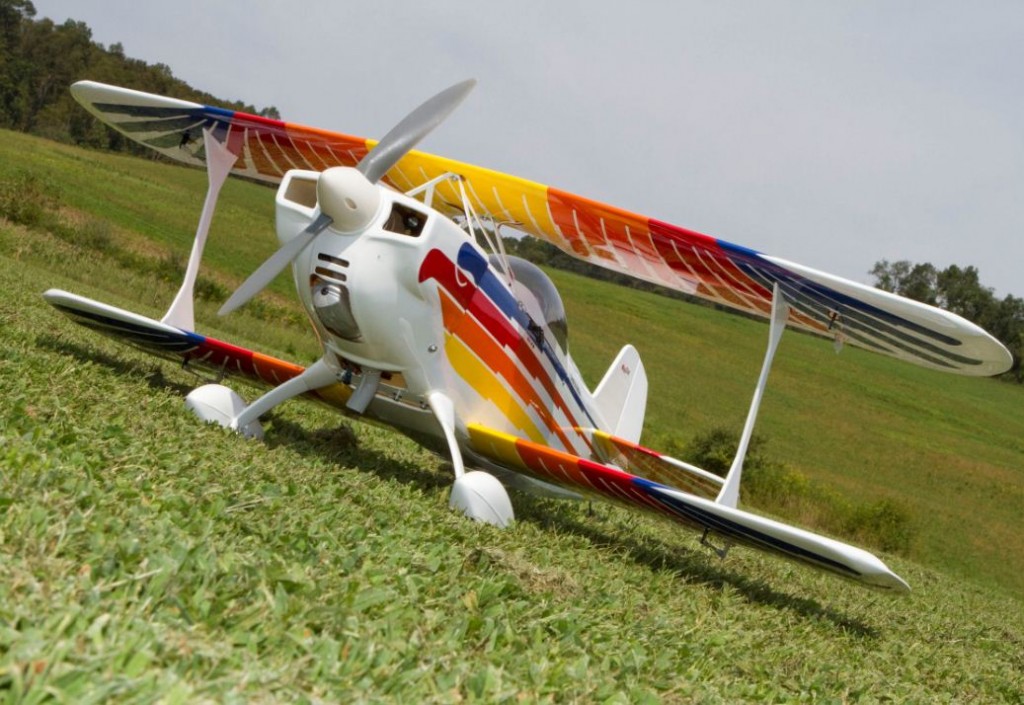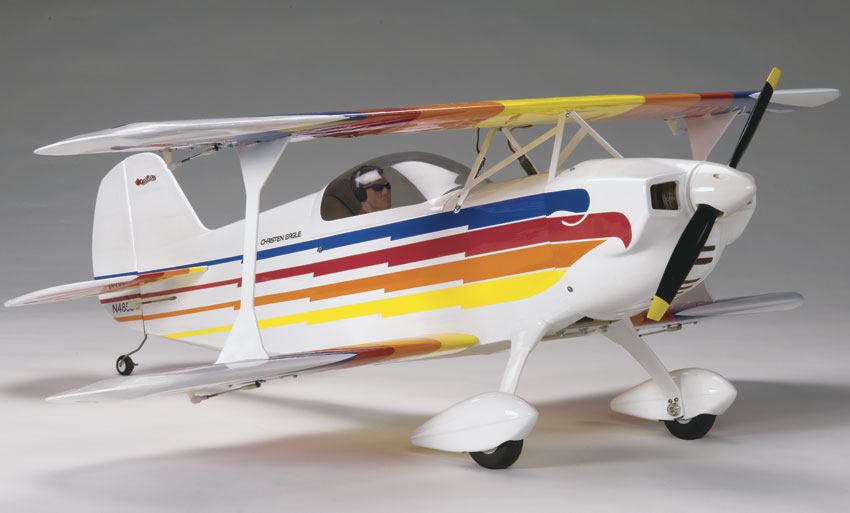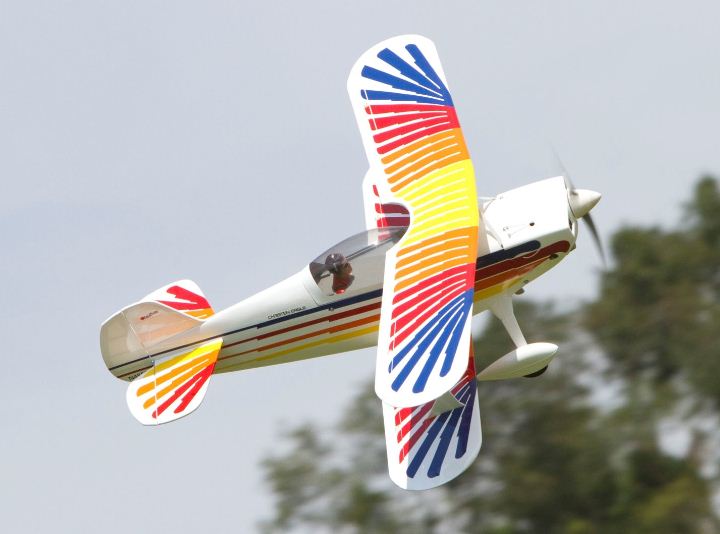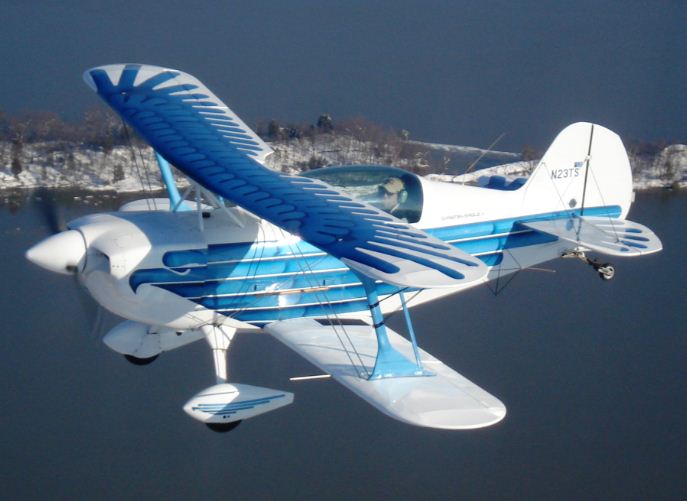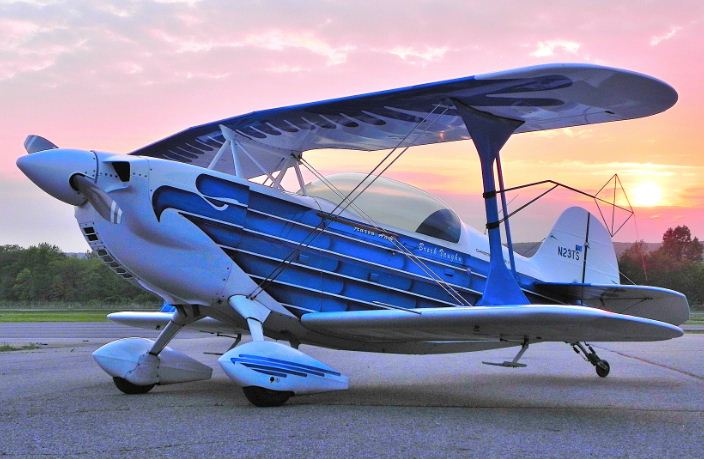From the upcoming January 2012 Model Airplane News Flight Report.
By Aaron Ham
IN THE AIR (the Model)
Flying the Eagle can be accomplished from pretty much any type of field. A paved field is great but a grass club field is also just as good provided the grass is cut somewhat short. The small wheels and wheel-pants can get caught up in longer grass.
General Flight Performance
- Stability – The Eagle is extremely stable at all airspeeds and configurations. With the CG at the 3-15/16” location, the airplane was perfect. I experimented by moving the CG aft by 1/8” and found the airplane a bit more pitch sensitive but easily manageable. The aft location also allowed for deeper aerobatics and a great snaps.
- Tracking – Straight as an arrow. I was extremely impressed with the Eagle right from the initial takeoff. Tracking was straight with one click of right rudder trim and two clicks of nose down elevator trim. Looping the airplane away from you is a perfect indicator of needed rudder trim. You know you have it right when the loop doesn’t corkscrew.
- Aerobatics – Well….It is an Eagle. It is built for aerobatics. At low rates, the Eagle is capable of any scale and graceful maneuver. At high rates, let the fun begin. Tumbles, deep snaps and flat spins are all possible. Anything just short of all out 3D is possible on high rates.
- Glide and stall performance – Although the full scale Eagle has the glide ratio of a Ford half ton truck, this Great Planes Eagle is much more forgiving. Although it is a biplane and has its share of drag, the eagle floats quite well. Stall performance is just as gentle as the real thing. At low rates, it’s tougher to get the airplane to break but with High rates, the eagle will stall straight ahead provided you have the ball centered.
Pilot Debriefing
The OS 55AX is a great power-plant for the Eagle. At full power and a small amount of right rudder to keep the nose straight and a bit of up elevator due to the long grass, the Eagle accelerated quickly and was airborne in no time. When an airplane climbs out with little effort and minimal trimming, it’s mandatory to do a roll on takeoff isn’t it? I think so and…..I did. The Eagle was developed for one purpose – to do aerobatics. So, although it is fun to fly around the pattern and do takeoff and landings, I didn’t feel it was right to do that with the Eagle. I have other planes for that. Aerobatics is where it’s at and that’s what I did.
I didn’t do anything special with any kind of radio programming. I kept it simple and did not add any mixes. It really didn’t need it anyway. Knife edge passes had a small tendency to pitch towards the canopy but nothing drastic. Loops were round and graceful needing just a small amount of right rudder during the pulls. Hammers were nice but needed high rates for a nice pivot.
Stalls and spins were easy to anticipate and easy to recover from. If you want to increase the rotation rate of the spin, add a little aileron in the direction of rotation – that’ll get your blood pumping. Tumbles were fun but needed high rates to really get things moving.
Landings are no different than most of your other airplanes. Keep the nose pointed in a downward path, watch the airspeed and don’t let it get too slow. Prop choice can also change the characteristics of your approached and landing speeds without adversely affecting flight performance. I started with an APC 12X7 which was great for everything but the landings. I just couldn’t get the airplane slowed down like it should for landing. A 13X6 was nearly perfect for all flight regimes and slowed the Eagle nicely on final. I would also like to try a 14X5 or 14X6 the next time out but those were the only two I had at the time.
Remember, each engine has a range of props that are acceptable. If you think each engine has one prop that is best for it, think again. It’s the airframe, engine and prop that make the airplane the best it can be.
IN THE AIR (the full-size)
Flying the Full-size Christen Eagle II
We’ve worked with contributor Aaron Ham for many years and he’s known around the office as the Model Airplane News guy who flies real biplanes. We sat down with Aaron and talked about his other hobby, flying the Christen Eagle II. Here’s the back story.
Aaron, tell us about your flight experience.
I’m a corporate pilot for the Xerox Corporation and I fly a Canadair Challenger 601. I have over 8000 hours in the cockpit and I started flying the Christen Eagle II in the winter of 2008. Before I started training for the Christen Eagle I had about a hundred hours in tail-draggers including 10 hours in a CAP 10B and other various log entries for planes like the Citabria, Decathalon and the Cessna 150 Texas Tail-dragger.
Where did you get your training?
Before soloing in the Christen Eagle II I went to Arizona and hooked up with your buddy and the editor for Flight Journal magazine Budd Davisson. He runs the Plus 5 Sport Aero aerobatic school in Phoenix, AZ. We trained in his Pitts S2A and in about two and a half days Budd signed me off. Much of the time was spend in the pattern just doing takeoffs and landings.
Tell us about takeoffs.
Taking off and much of the general flying is done with your peripheral vision, because there’s little forward visibility. Once the tail comes up during takeoff visibility improves greatly but by then you’re already in the air and climbing out.
Generally speaking, the Eagle II is a very stable airplane and I give rides to friends every now and then to share the amazing experience only a Eagle II can offer.
How did you get into Competitive Flying?
When I was a kid, I was inspired by the Red Devil Pitts Special show team. The pilots Jean Soucy and Tom Poberrezne and Charlie Hillard are world famous and when they converted the Christen Eagles, I fell in love with the airplane. I always wanted to fly one in competition and I started in late 2008
What about the numbers?
The entry speed for any vertical aerobatics maneuver like Loops, and Cuban-8s Hammerheads, etc., is 180mph. Normal flying speed is 135 indicated. Rolls can be done at any speed and when you roll out at the top of a loop, you can easily do it at about 80mph. During competition the G-loading can be anywhere from +6 to -3 Gs. Generally, for most fun aerobatics I pull 3 to 4 Gs. The roll rate is about 180 degrees per second.
What about landings?
For landing you want to perform a constant 180 degree descending slip so you can keep the end of the runway in sight. About 95% of the time as you come over the runway’s threshold, (with no crosswind,) you level the wings and again using peripheral vision to keep yourself parallel to the edge of the runway until you touch down in a 3-point landing.
What do you like the best about the Christen Eagle?
Really, the coolest thing about flying the airplane is just flying it! It comparable to a Pitts S2A and I just love strapping in and taking off. To see more about my and Christen Eagle II be sure to watch episode 52 of the Radio Control Show.



